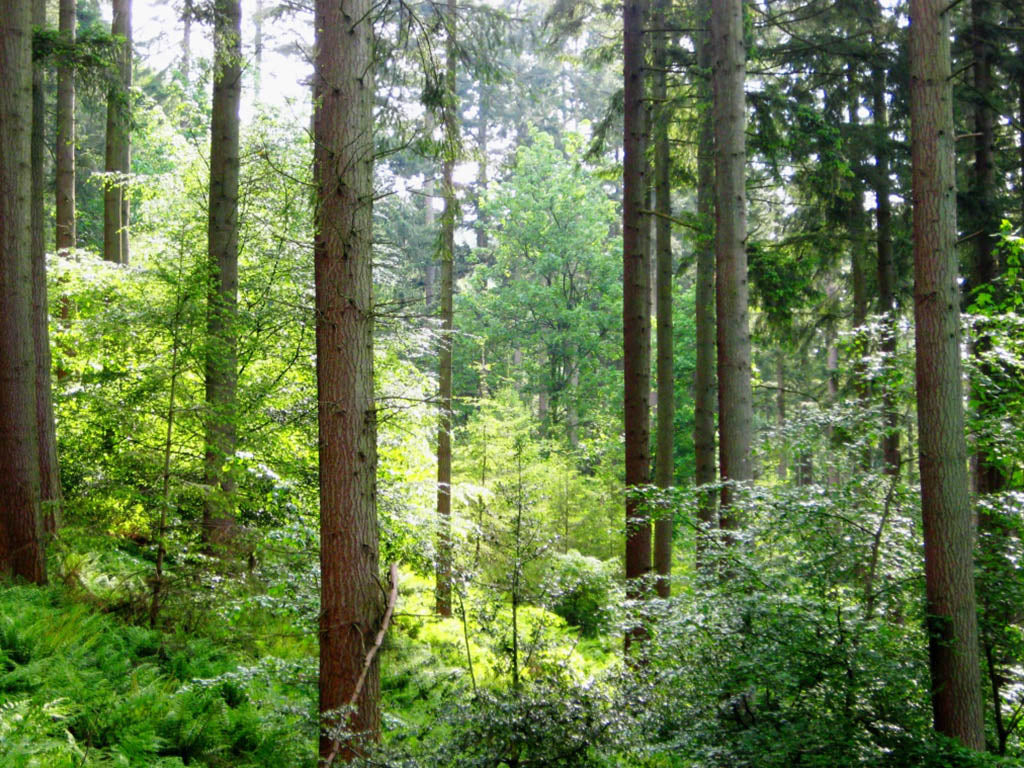Sustainable forestry

In and of itself, wood is very “green” compared to most materials used in typical building construction: among other things, it is biodegradable, renewable, recyclable, non-toxic and climate friendly, because when trees grow, they sequester heat-trapping carbon dioxide and turn it into wood. So - if wood is inherently green in many important respects, what is a responsible forest product?
Discussions of the ‘greenness’ of wood nearly always revolve around sources—where does the wood come from? Was it salvaged, reclaimed or recycled? Or was it harvested from a forest or a tree plantation?
Wood can be recycled, reclaimed, or salvaged from a wide variety of sources. Most people are comfortable that wood products that are reclaimed from the deconstruction of old buildings or whose contents are recycled from milling by-products is environmentally responsible. After all, this is all generally material that might otherwise go to waste. However, the supply of wood from such sources is not infinite and in most cases will not grow back – eventually we will run out.
In the end, all wood comes from trees that must be harvested either from forests or plantations. The inalterable connection between wood and logging is what makes people question wood’s status as a “green” material, so let’s take a closer look at the variety of ways in which timber can be produced.
Trees can be grown as a “crop” in plantations or they can grow in natural or semi-natural ecosystems. Tree farms and natural forests alike can be managed relatively responsibly – or not.
Responsible forestry in natural forests preserves or restores the health and integrity of forest ecosystems. It minimizes the use of chemical herbicides and fertilizes and preserves the natural fertility of the soil, protecting against erosion and maintaining the quality of forest streams and other waterways. It conserves biodiversity, including the habitat of threatened and endangered species. And it respects the well-being of forest-dependent communities and respects the rights of indigenous peoples.
There is a place for plantation forestry – or tree farms – in sustainable timber production, but they should divert pressure from natural forest ecosystems rather than displacing them. Environmentally-responsible plantations avoid use of genetically modified organisms. Socially-responsible plantations respect the rights and promote the well-being of workers and local communities.
But how can you know if your wood comes from responsible sources?
The answer is forest certification, a voluntary process intended to ensure consumers that the wood products they buy are backed by responsible forest practices. The Forest Stewardship Council (FSC) is a not-for-profit organization that is widely recognized as the gold standard in forest certification. FSC is supported by many well-known environmental groups, including The Nature Conservancy, World Wildlife Fund, National Wildlife Federation, Greenpeace and Sierra Club.
There are two main components to forest certification. The main one is certification of the forests themselves. This starts with a set of standards covering the social as well as environmental aspects of responsible forestry. Third-party certifiers perform annual on-the-ground audits of forestry operations to ensure that the standards are being met. If the management practices are up to snuff, the operation is certified and its products can bear the green label. Operations downstream from the forest in the production and distribution chain – the so-called “chain of custody” – are also certified and audited annually to ensure that they are handling certified and non-certified wood properly and promoting it honestly.
Promoting sustainable forestry is key to saving forests. Building markets for responsible forest products creates incentives for people to preserve forests as forest instead of converting them to other uses such as agriculture and cattle pasture.
One way to promote sustainable forestry is to purchase wood flooring – including Monarch Plank wide-plank, long-length flooring – from FSC-certified, sustainably-managed forests. In addition to Monarch Plank, Galleher stocks half a dozen wood flooring brands, including both domestic and exotic species, that are available as FSC certified. Moreover, all of Galleher’s facilities are certified for Chain of Custody, meaning that we can cost-effectively deliver FSC-certified products throughout the areas that we serve.
For more informationLeave a comment
Comments will be approved before showing up.




